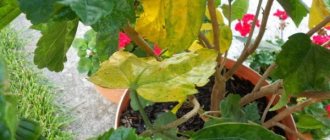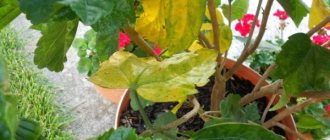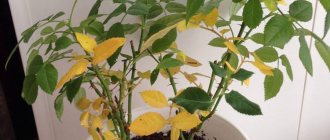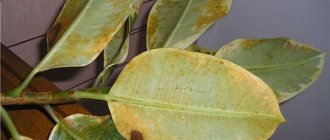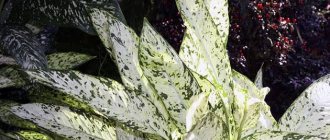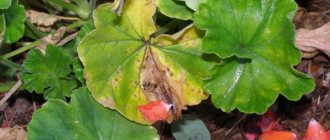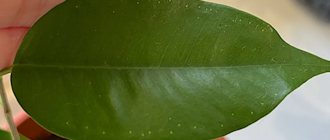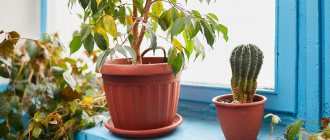Gardenia jasminoides, scientifically known as Gardenia jasminoides, belongs to the Rubiaceae family. It was called jasmine because of the intoxicating aroma of flowers. In its homeland - China, Japan, and subtropical forests of India, this evergreen shrub can reach a height of two meters. In greenhouse or indoor conditions - only 50 cm.
More than 250 species of this plant are known. Double gardenia flowers have shades of cream, white and yellow. They can be collected in inflorescences or arranged singly. The shiny green leaves are ovoid in shape with pointed ends. They are located oppositely or whorled.
Caring for gardenia jasmine, also known as Cape jasmine, is not easy. But, having studied all the whims of the beauty, you can be rewarded with a profusely flowering plant.
The basic minimum conditions necessary for the normal growth of gardenia jasmine:
- Slightly acidic substrate.
- Good lighting, but without scorching sun rays. The plant feels good on southern and western windows. On the north side additional lighting is needed.
- The ideal air temperature for gardenia jasmine is 18-22°C.
- Increased air humidity. The plant loves frequent spraying. It is important that moisture does not get on the blooming flowers and buds.
- Moderate watering. In winter, gardenia can only be watered with warm water.
The slightest failure to comply with the above conditions leads to gardenia jasmine disease or its complete loss. If the leaves of a plant begin to turn black and fall off, it is necessary to urgently take measures to save the flower.
Description of the plant
Gardenia is a heat-loving plant that grows in the south. Demanding about the conditions of his detention. Growing this decorative indoor flower is very troublesome.
It’s not uncommon for flower growers to take a risk by buying it for their winter garden, but the time and effort spent on care does not go unrewarded. He thanks his owner with long and abundant flowering.
The plant responds very violently to any external stimuli and care features. The cause of the disease can be improper watering, poor lighting, low temperature in the room where the flower is located, low humidity and many other reasons.
With any disease, the plant loses its decorative effect. Its leaves turn yellow and dry, and in some cases even turn black and the buds fall off.
Features of cultivation
The plant is quite demanding in terms of maintenance conditions. Beginning gardeners may encounter difficulties caused by watering, lighting, fertilizing, and the composition of the soil for replanting.
Gardenia does not tolerate being moved from one place to another; you cannot even turn the pot, because the leaves and buds may begin to fall off.
Important!!! The plant must be provided with all the conditions necessary for a comfortable existence. If you don’t do this, you may never get high-quality development and long flowering.
How to care for gardenia
Gardenia jasmine requires special care at home. First of all, you should choose a bright place for it, but so that the flower does not receive direct sunlight.
They can burn the leaves, causing spots to appear and the foliage to become unsightly. Therefore, choose east or west windows.
If the only bright place in the house is the southern window sill, then the bush will need to be shaded during the hottest hours with a light cloth, gauze or paper.
The flower also loves warmth, so do not place it in a draft or on windowsills where the windows open during the cold season. At the same time, it is not recommended to place the flower on window sills above working heating radiators. Many gardeners complain that gardenia jasmine leaves turn black and fall off. The reason may be the dry air coming from the battery.
In winter, daylight hours are short, which is not suitable for gardenias. Therefore, it is recommended to illuminate it using fluorescent lamps.
Do not be alarmed if a newly acquired plant, even with proper placement and care, begins to shed its leaves and buds after a while. When it adapts, it will begin to grow again.
Gardenia: cultivation, propagation, transplantation
Author: Natalya February 17, 2022 Category: Houseplants
Gardenia is one of the most beautiful flowering plants in indoor culture. And, perhaps, one of the most capricious. Gardenia has won love and recognition in many countries. For the Japanese it symbolizes secret passion, for the Chinese it symbolizes femininity, grace and aristocratic fragility. Lovers of indoor plants are delighted by the beauty of gardenia flowers and leaves and its delicate, pleasant aroma. However, caring for this plant is not easy.
- How to plant and replant gardenia?
- What conditions does it need for normal development and abundant flowering?
- What kind of care will she need?
You will learn about this and much more from our article.
Content
Listen to the article
Planting and caring for gardenia
- Flowering: from July to October.
- Lighting: bright diffused light (placed on eastern and western window sills, shading will be required on southern windows in the afternoon).
- Temperature: from 16 to 24 ˚C.
- Watering: during the period of active growth - as the top layer of soil dries, in winter - with a delay of 2-3 days.
- Humidity: high, especially during budding.
- Feeding: young gardenias - 2 times a month alternately with mineral and organic fertilizers in liquid form, adults - every week, but the fertilizers should not contain calcium.
- Dormant period: February-March.
- Transplantation: in early spring or after flowering: young gardenias are replanted annually, adults - once every 3 years.
- Reproduction: seed and vegetative (cuttings).
- Pests: white aphids, spider mites, scale insects, mealybugs and thrips.
- Diseases: sooty fungus, chlorosis.
Gardenia (lat. Gardenia) is a genus of the Rubiaceae family from the tropics, which is named after the American physician and naturalist Alexander Garden. In indoor conditions, the gardenia flower does not take up much space, but in nature - in East and Southeast Asia, as well as in South Africa - the gardenia plant sometimes reaches two meters in height. Gardenia, grown at home - jasmine, sometimes called "Japanese beauty" by gardeners; it came to England in 1760.
Flower growers grow it not only for the beautiful white, waxy flowers that emit a subtle jasmine scent, but also for the glossy leaves of a rich dark green color, which are a worthy decoration for gardenia when it is not in bloom.
Homemade gardenia - growing features
Gardenia jasminoides is an evergreen bush that grows in a room up to 45-50 cm in height. Its shoots are sometimes bare, sometimes pubescent; the leaves are dark green, bright, shiny, as if opened with varnish, short-petiolate, about 10 cm in length, broadly lanceolate or obovate, entire, tapering towards the base. Gardenia blooms in summer with fragrant single or few-flowered (4-6 pieces) corymbose inflorescences, axillary or apical. At the beginning of flowering, the flowers are boiling white, but gradually turn yellow. The diameter of the flowers reaches 8 cm, and varieties with double flowers are most often grown in cultivation. Caring for gardenia at home is not as simple as, for example, pelargonium, but the result is worth the effort.
Caring for your home gardenia
How to care for gardenia at home
Find a bright, warm place in the apartment, protected from drafts, for the gardenia - the lighting should be bright, but diffused; the temperature was mentioned above - from 16 to 24 degrees. Eastern or western window sills are most suitable for the flower; northern ones are excluded, and placement on a southern window sill will require shading from the sun's rays from 11:00 to 17:00.
Difficulties of care
Gardenia is a rather capricious plant.
- It is demanding on soil moisture. In spring and summer - during active growth - it requires a lot of moisture. But with all this, you should not allow water to stagnate in the pot; excess water must be drained.
- An important point in caring for gardenia is the quality of water. Simply letting the water stand for irrigation is not enough; the water must be soft and must be passed through a filter. If this is not available, only boiled water should be used for irrigation.
- Does not tolerate sudden changes in temperature. For gardenia, both excessively high and excessively low temperatures are equally undesirable. In summer, the plant will feel most comfortable at a temperature of 22-24°C, in winter – at 14-16°C.
Increased air temperatures in summer provoke increased growth of shoots, which occurs to the detriment of the establishment, growth and preservation of flower buds. Of course, it is almost impossible to influence the air temperature in summer, but you can smooth out the situation somewhat by trying to increase the air humidity: place the pot with the plant on pebbles or a regular tray with water and be sure to spray its crown several times a day.
In fact, caring for this capricious beauty is not as difficult as it might seem, and in response to the efforts made, gardenia will certainly delight you with its abundant flowering.
Difficulties and solutions
Improper care and failure to comply with basic flower maintenance requirements leads to a variety of problems that gardenia owners often encounter.
If such a flower gets sick, it is important for the gardener to immediately find the causes of the disease.
If the leaves turn black and fall off
Overwatering and direct sunlight on the leaves can lead to their blackening and subsequent falling off. If the crop has been flooded, it is recommended to immediately transplant it into a new pot.
Rotting of the root system is the cause of blackening and falling of the cover.
Overdrying the soil can also lead to blackening.
If the temperature drops sharply, then blackening of the leaves is also likely. A draft can also lead to this. The optimal temperature for keeping gardenia jasmine is around 20 degrees, but not more than 25.
Infection of the plant with spider mites often leads to blackening . It can be identified by a whitish coating in the form of a cobweb. This pest can be treated with insecticides or soap solution.
Why do the leaves turn yellow?
The main reasons for yellowing leaves:
- Changes in air temperature;
- Incorrect watering regime;
- Wrong substrate.
Adjusting watering and temperature microclimate is the direct responsibility of the gardener.
Thus, it is necessary to adjust the temperature regime and watering of the gardenia. You can’t either overwater or overdry the culture. The top layer should dry out between waterings , but the soil should not be allowed to dry out completely.
To purify water from chlorine, it is recommended to filter, boil or let it sit for several days.
As for the substrate, gardenia loves acidic soil , but excessive acidity will cause yellowing of the leaves. Iron chelate can be added to reduce acidity. In neutral and alkaline soils, gardenia will not do well.
A deficiency can also lead to yellowing of the leaves:
Lack of watering can cause yellow leaves to fall off. Even green leaves may also fall off. It is necessary periodically spray the plant with epin.
Gardenia also does not tolerate drafts. Drafts are a common cause of young leaves falling off.
What to do if the leaves dry out
Possible reasons
Incorrectly selected water for irrigation
Low air humidity
Thus, it is recommended to provide the crop with the correct watering regime and not wait for the soil to dry out completely. It is enough for only the top layer of soil to dry. In addition, the water must be soft and free of chlorine.
Too dry air is a common cause of many serious problems, from drying and falling leaves to failure to bloom. In order to increase air humidity, you will need:
- Fill the tray under the pot with small, moistened pebbles. The tray should be larger in diameter than the bottom of the pot;
- Spray regularly , avoiding contact with buds and opened flowers;
- Use special humidifiers.
Temperature changes and drafts are very dangerous for gardenias. However, it is not only this flower that has leaves that dry out. For example, we told you 4 reasons why begonia leaves may dry out.
The cause of jasmine ill health can be either a violation of the regime or damage by a pest.
If the buds fall
This is one of the most unpleasant phenomena that gardenia owners have to face. The reasons may be:
- Excessive dryness of indoor air;
- Drafts;
- Changes in air temperature;
- Changing the location of the flower pot or rotating it relative to the lighting ;
- Transplantation at the moment of bud formation.
Dry air is the most common reason for the buds to fall off and the plant to fail to bloom.
Why doesn't gardenia bloom?
There may be several reasons:
- Incorrect temperature conditions;
- Little light;
- Lack of fertilizers;
- Excessive dry air;
- Incorrectly selected soil.
The temperature of gardenia should be no less than 18 degrees and no more than 25. In other temperature conditions, the plant will not please with its luxurious flowering. After all, this plant comes from southern Asian countries and does not tolerate low temperatures .
Warm temperatures are important for gardenias, as they do not tolerate low temperatures.
It is best to place the pot with the crop on the east window. In the south it will be too hot for her. Also, exposure to direct sunlight can cause burns on the leaves.
The plant needs the following elements:
Therefore, when purchasing fertilizer, you need to choose one where these elements will predominate.
Leaf discoloration
Discolored or pale yellow leaves with green veins indicate that the gardenia is infected with chlorosis. The reason is very waterlogged soil, in which iron is not absorbed by plants.
It is necessary to reduce watering and spray the plant with special iron preparations. In the future, you need to carry out regular feeding using chelated elements.
Gardenia flower: description with photo
The homemade gardenia jasmine bush reaches no more than half a meter in height.
It has hairy or bare stems with shiny dark green leaves. It seems that the foliage of the gardenia is varnished, which is why the plant looks beautiful even without flowers. Each leaf is narrowed towards the base and has a length of about 10 cm. In the spring, buds begin to appear on the shoots of the bush, which can be single or collected in inflorescences consisting of 4-6 flowers. Gardenia begins to bloom in May with boiling white fragrant flowers, which after some time become cream or pale yellow. The flowers can be simple or double with a diameter of up to 8 cm. When they fade, new ones begin to bloom to replace them, so with proper care, gardenia blooms within three to five months.
Why do gardenia leaves turn yellow?
Gardenia leaves lose their usual green color and turn yellow for a number of reasons. Gardenia jasminoides responds by yellowing of the crown to the following violations of the rules of agricultural technology:
- Incorrect watering;
- Unbalanced composition of the substrate;
- Chlorosis;
- Incorrect lighting;
- Soil depletion.
Incorrect watering certainly causes changes in the condition of a houseplant. Both overwatering and drying out of the earthen clod have a negative impact. The soil in the flowerpot should always be slightly moist.
The norm is considered to be the drying of three to four centimeters of the top layer of the substrate.
Reasons and what to do
This also happens often. This is due to the stress your plant has recently received.
Causes:
1. Lack of watering
When the gardenia begins to shed leaves, for example, they suddenly turn yellow and crumble or fall off without changing their appearance, then this is a consequence of drying out. Adjust watering, and to combat stress, use spraying with an immune stimulant - epin. It would not be superfluous to carry out “reanimation” for gardenia. Spray it with water or epin solution and put a plastic bag (garbage bag, for example) on the bush. Leave it like this for a day. This is a great way to quickly tidy up dried gardenia.
2. Draft
Gardenia leaves fall off if it is “blown out”. Of course, gardenia lovers know that she loves cool weather. However, you should not place it near an open window from which it blows.
How to eliminate the causes of the disease
Problems with the substrate (overdried or waterlogged) or air humidity
First of all, you need to tear off all the blackening leaves. Next, the gardenia is treated with one of the fungicides:
After processing, the plant along with the pot is placed in a spacious plastic bag - a kind of greenhouse. The flower is sprayed and the bag is tied. That is, ideal conditions are created for 100% air humidity.
The package must be opened periodically for ventilation. Water the gardenia with settled water when the top layer of soil becomes completely dry. If you notice that the plant is coming to life, begin to gradually accustom it to indoor conditions - remove the plastic bag for a certain time. During the rehabilitation period, gardenia cannot be fertilized.
Insufficient amount of iron in the substrate
Gardenia prefers acidic, iron-rich soil. But excessive watering can wash away the components necessary for the plant. If the leaves of the gardenia turn black and fall off, and you know that you have not fed the substrate with a weak acid solution and iron-containing preparations for a long time, this is a clear sign of a lack of iron in the soil.
To correct this error, you can use the following compositions to saturate the substrate with the necessary components:
- iron chelate "Antichlorosin";
- micro Fe;
- ferovit.
Why do the buds fall off?
If gardenia buds do not bloom, turn black and fall off, this may be due to improperly selected soil, non-compliance with the temperature regime (low temperature or sudden changes), or direct sunlight. It is also common for gardenia to shed buds due to water getting on them during spraying or moving pots during their formation.
During the formation of flower buds, Gardenia jasmine requires high air humidity. Therefore, in order to preserve them and ensure abundant flowering, you need to regularly spray the plant, covering the buds.
You can periodically wipe the leaves with a damp cloth. Organize humidification from the tray.
The leaves of the plant are glossy, opposite, rarely 3 in whorls. They have triangular-shaped stipules. In addition, they have pinnately looped venation, the arrangement of leaves is crosswise and opposite. Even without flowers, the bush looks decorative due to its dense, leathery leaves of a dark green hue. They have an oval shape and pointed ends. They reach a length of up to 10 cm.
How to help gardenia
If the buds fall off due to changes in housing conditions, then you can help the plant by periodically treating it with epin or any other drug that reduces stress in indoor plants. The same treatment must be carried out after purchasing gardenia in a store. If parasitic fungi or pests have settled on the gardenia, then treatment with epin alone will no longer be enough. It is also necessary to get rid of diseases and pests by using fungicides against fungi, as well as insecticides and acaricides against insects and spider mites.
Gardenia diseases
The gardenia's buds are falling off
Sometimes this problem begins at the moment of bud formation: the temperature regime has been disturbed. Strictly ensure that the temperature stays between 20-18 ºC during the day and 18-16 ºC at night. If the temperature is too high at night, buds may not form at all. And no sudden changes! Watering gardenias should be regular. Insufficient air humidity or improper lighting, drafts, moving a flowerpot with a flower from place to place - any violation of the rules for caring for gardenia can lead to the plant losing buds. Therefore, be vigilant and disciplined.
Gardenia turns black
The simplest explanation for why gardenia leaves turn black is that it is not watered correctly. Either the soil is too dry, or it has been too wet for a long time - this is why the leaves of the gardenia turn black and fall off. Pere
Pests
If the air in the room is too dry, gardenia is very often affected by various pests. These can be aphids, scale insects, thrips, spider mites and whiteflies. After the pests are destroyed, you need to increase the humidity level in the room or move the gardenia to more comfortable conditions.
How to get rid of pests
Spider mites are especially likely to prey on gardenias. They spin webs under the leaves, and the leaves begin to turn black and fall off. In this case, damaged leaves are urgently removed. The plant is treated weekly with the following preparations:
- actellik;
- acarin;
- neoron;
- bicol;
- demitan, etc.
Spider mites quickly adapt to poisons, so medications need to be changed. This pest does not tolerate moisture; constant spraying of the plant with water is terrible for it.
Gardenia jasminoides is a sissy. Keep this in mind when growing this beauty on your windowsill. Do not leave a flowerpot with a flower in the scorching sun or in a draft. Otherwise, disappointment cannot be avoided.
Pests and ways to combat them
In addition to diseases, gardenia is susceptible to attacks by various pests.
White aphid
A harmful insect that attacks the stems and foliage of plants. This is often the reason why buds fall off. You need to know that this insect reproduces very quickly. When it appears, it is necessary to urgently take measures to destroy the pests.
Spider mite
This is the main enemy of the tropical beauty. Along with it, the plant is also threatened by the scale insect. To get rid of pests, it is necessary to periodically wipe the leaf plates with a napkin or cotton pad soaked in water.
This will help ensure comfortable air humidity around the flower and detect the presence of pests and their larvae.
If shoots infected with spider mites are found, they must be removed immediately. This pest attacks flowers when the humidity in the room where they are located is too low. For preventive purposes, they need to be sprayed regularly.
If the pest appears, it is necessary to treat the leaves with special insecticides. This will rid your gardenia of spider mites for a long time.
If only the tips of the leaves turn yellow
When only the edges of the leaves turn yellow, this means that the flower does not have enough sunlight. This often happens in winter, when daylight hours are reduced.
The situation can be corrected with artificial lighting, and the flower does not need to be removed from the windowsill. He really dislikes rearrangement and reacts negatively to a change of place.
And yet, the plant must be rearranged twice during the year. Once the rearrangement is done with the onset of autumn, and another time in the spring, moving the gardenia from the windowsill to where it will not reach the direct rays of the sun.
The fact is that excess ultraviolet radiation is harmful to the flower. Its delicate leaves begin to turn yellow both from lack of light and from intense sun exposure. Thermal burns in the form of yellow spots may appear on the leaves.
If the plant is moved to a shaded place, the burns disappear.
What diseases affect the flower?
If at least one rule is violated, diseases can overcome the flower. The danger comes from viral, fungal (rust, powdery mildew, various rots), and bacterial diseases.
You can tell that a plant is sick by the leaves, or more precisely by the spots that appear on them.
Mealybug under a microscope.
Powdery coating on the leaves on the underside indicates a fungal disease called powdery mildew. If brown spots appear on the stems and foliage, it means the plant is affected by rust, and if brown tubercles appear on the leaves, this means scab.
It happens that the leaves of a flower turn black. There may be several reasons for this. When the leaves turn black below, this is the result of excessive watering and compacting the soil in the pot. Because of this, the roots lack oxygen. It happens that due to frequent watering, silting of the drainage occurs. In this case, you need to thoroughly loosen the soil in the pot. Also, the bottom of the leaves turn black due to excess fertilizer.
When the foliage above turns black, pests may have appeared or the flower has become ill. It is necessary to treat gardenia with the drugs mentioned above.
Viral diseases appear inside the leaf. In any disease, damage begins from the leaves. Their color changes, the spots increase, and the leaves begin to fall off. Having noticed the affected leaves on a flower, they should be immediately torn off and burned, and the gardenia should be isolated from other flowers and treated with special means.
If the plant is severely damaged, 3-4 treatments will have to be done. To prevent diseases, the flower can be treated 1-2 times with Abiga-Peak, colloidal sulfur or other products containing copper.
We must not forget that diseases can be transmitted along with the soil. To make gardenia more resistant to diseases, it is necessary to feed the plant with potassium and phosphorus fertilizers in a timely manner.
As you can see, gardenia is a very capricious plant that requires daily attention and proper care. To grow a healthy, beautiful plant and make it bloom, you will need to put in a lot of effort.
What to do if gardenia dries out more and more every day
Since gardenia jasmine, like any other, is a rather capricious plant, it can dry out for a variety of reasons, which are usually associated with errors in maintenance. If this happens, then before it completely dries out, you can try to save the flower in the following way:
- It is necessary to inspect the gardenia and trim off all shoots that have dried completely;
- Prepare acidified water and spray generously;
- Cover the plant with a plastic bag and place it in a place with good lighting;
- After a week, treat with a growth stimulator (Epin, Zircon).
In the future, you must strictly adhere to all care recommendations.
Recommendations for growing the plant
In order for the flower to grow beautiful and healthy, you must follow some rules:
- do not keep gardenia in direct sunlight;
- avoid sudden changes in temperature;
- do not overwater the plant, but also do not let the soil dry out;
- maintain indoor air humidity;
- ensure soil acidity;
- during the flowering period, do not change the position of the container with gardenia;
- water for irrigation should be slightly warm and soft;
- inspect the leaves daily for timely detection of spider mites;
- Sprinkle the leaves with water every day, and once a week with Epin (plant growth regulator).
Reasons for the poor condition of Gardenia jasmine
An incorrectly selected substrate for a plant can lead to the following unpleasant problems:
- Falling leaves;
- Yellowing of leaves;
- Refusal to bloom.
The plant requires acidic soil. Alkaline and neutral substrates are not suitable for it . In them, gardenia roots will not maximally absorb all the necessary elements.
For gardenia, good substrates would be Gardenia or Azalea. They can be purchased at specialized flower shops.
It is also recommended to periodically acidify the water for irrigation if the soil is not acidic enough. citric acid or lemon juice as an acidulant .
The flower prefers high air humidity. If the air in the room is too dry, the buds may fall off, and the plant may refuse to bloom.
Therefore, humidity must be kept at a high level. You can use special air humidifiers .
A lack of iron in the soil can cause the leaves to begin to turn yellow. This phenomenon is called chlorosis. To combat the disease, you need to water and spray the flower with preparations high in iron.
Sometimes rusty nails are buried in the ground. This technique will help increase the amount of iron in the soil.
Incorrectly selected soil, dry air, lack of lighting or incorrect watering regime are the causes of many serious problems . In order for a flower to grow healthy and beautiful, it is necessary to provide it with all the necessary conditions and give it maximum attention.
Video
Sources
- https://ayrshire.ru/u-gardenii-zhelteyut-listya-chto-delat.html
- https://mvazonchik.ru/gardenija-zheltejut-listja.html
- https://baza-polimerov.ru/komnatnye-cvety/pochemu-gardeniya-sbrasyvaet-butony.html
- https://cvetolubam.ru/gardenia-bolezni/
- https://greeninhouse.ru/chto-privodit-k-pocherneniyu-listev-u-gardenii.html
- https://selo.guru/rastenievodstvo/derorativ/garden/bolezni-listev.html
- https://OgorodSadovod.com/entry/3487-u-gardenii-cherneyut-i-opadayut-listya-chto-delat-pravila-ukhoda
- https://GreenMarine.ru/komnatnye/pochemu-cherneyut-listya-u-gardenii.html
- https://floriums.ru/pochemu-u-gardenii-zhelteyut-cherneyut-i-opadayut-listya
- https://podokonnik.temadnya.com/846910344354334835/u-gardenii-opadayut-butony-i-tsvety/
- https://sp-smena.ru/dacha/voprosy/u-gardenii-zhelteyut-listya-chto-delat.html
- https://rusfermer.net/dom-kvartira/tsvety-kv/tsvetushhie/gardeniya/vozmozhnye-bolezni-listev.html
- https://cvetokmir.ru/gardenija-zheltejut-listja.html

